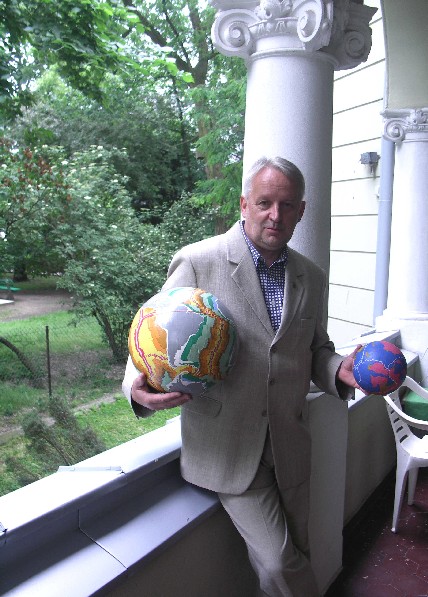Year: 2003 Pages: 5
Resemblance of seismic reflectivity in various geological environments indicates (1) the crucial influence of rheological properties of the lithosphere on reflectivity and (2) the common tectonic process responsible for development of seismic reflectivity. Depending on thermal conditions, the brittely deformable continental crust occurs to a depth of 10?20 km, which corresponds to temperatures of 300?400?C. Below this depth, there is a ductile deformation zone dominated by the flow of solid state matter. Obviously, the boundary between the brittle deformation zone and the ductile deformation zone is not sharp. Its width is dependent on both the heat flow and the lithology. Another rheological boundary is the Moho surface. The subcrustal upper mantle is brittlely deformable under the thermal conditions existing in this zone. Reflection seismic analysis confirms this rheological behaviour. There is a strict relationship between the viscosity of the continental lithosphere and seismic reflectivity. Sparse reflection packets related to fault zones (mostly of listric geometry) are observed in all the profiles in the crystalline upper crust, which in general is seismically transparent. These fault zones dip in different directions and flatten downwards. The lower crust is dominated by subhorizontal structures which are suggested by most authors to represent flow deformations. A transitional zone, sometimes referred to as the middle crust, occurs at the lower/upper crust boundary. Most listric fault zones die out within this part of the crust. It contains intracrustal large-scale lenticular structures, marked by reflection bands. The subcrustal upper mantle is characterized by a transparent seismic structure. Therefore, from the rheological point of view, the lower crust is a ?weaker? layer closed between the rigid upper crustal zones and the subcrustal lithosphere. Reflection lamination results from a process of tectonic deformation that is independent of the petrological stratification of the crust.
Multilayered stress distribution, proposed in the model of the continental lithosphere, is responsible for the formation of seismic structures, and cannot be an effect of the plate tectonic mechanism. The major features of these structures include: (1) a layered distribution of the stress field and deformation types; (2) a relatively young age of deformations; and (3) probable upward transmission of stresses. These features suggest the involvement of a tectonic process associated with the expansion of the Earth. The expansion of the Earth's interior, accompanied by a decrease in the curvature of near-surface layers, could give rise to observed stress pattern. The main thesis of the work is the idea of the influence of curvature changes (flattening) of the expanding Earth on tectonic processes. This idea was earlier expressed by Hilgenberg (1933), Rickard (1969), Jordan (1971), Carey (1976) and Maxlow (1995, 2001). In the upper crust, the first phase of flattening is manifested as the formation of compressional crustal structures described in plate tectonics as flake structures or tectonic wedges, and also as crustal delamination processes. As expansion accelerates, compressional structures are replaced by extensional structures in some areas. The subsequent geological evolution may proceed both towards further extension until the crust breaks, or, in the case of the consolidation of the area, towards another compressional phase which can result from the adjustment of the rigid upper crust to a new, smaller curvature of the Earth (tectonic inversion). Flattening structures correspond to the ones which are described by plate tectonic theory as resulting from so-called membrane tectonics. Flattening tectonics also explains numerous strike-slip, transpressional and transtensional structures, palaeomagnetically determined lateral rotations of blocks, the formation of oroclines and foldbelts, etc., commonly described in recent literature.
In the light of the proposed geological interpretation, the seismic structures of the continental lithosphere observed in reflection seismic profiles reflect different states of tectonic stresses. Planetary and regional intracrustal detachments occur at the lower/upper crust boundary and crust/subcrustal mantle boundary. Extensional stresses are transferred from the upper mantle towards the crust. This phenomenon is what we can expect to be the result of the Earth's expansion.


